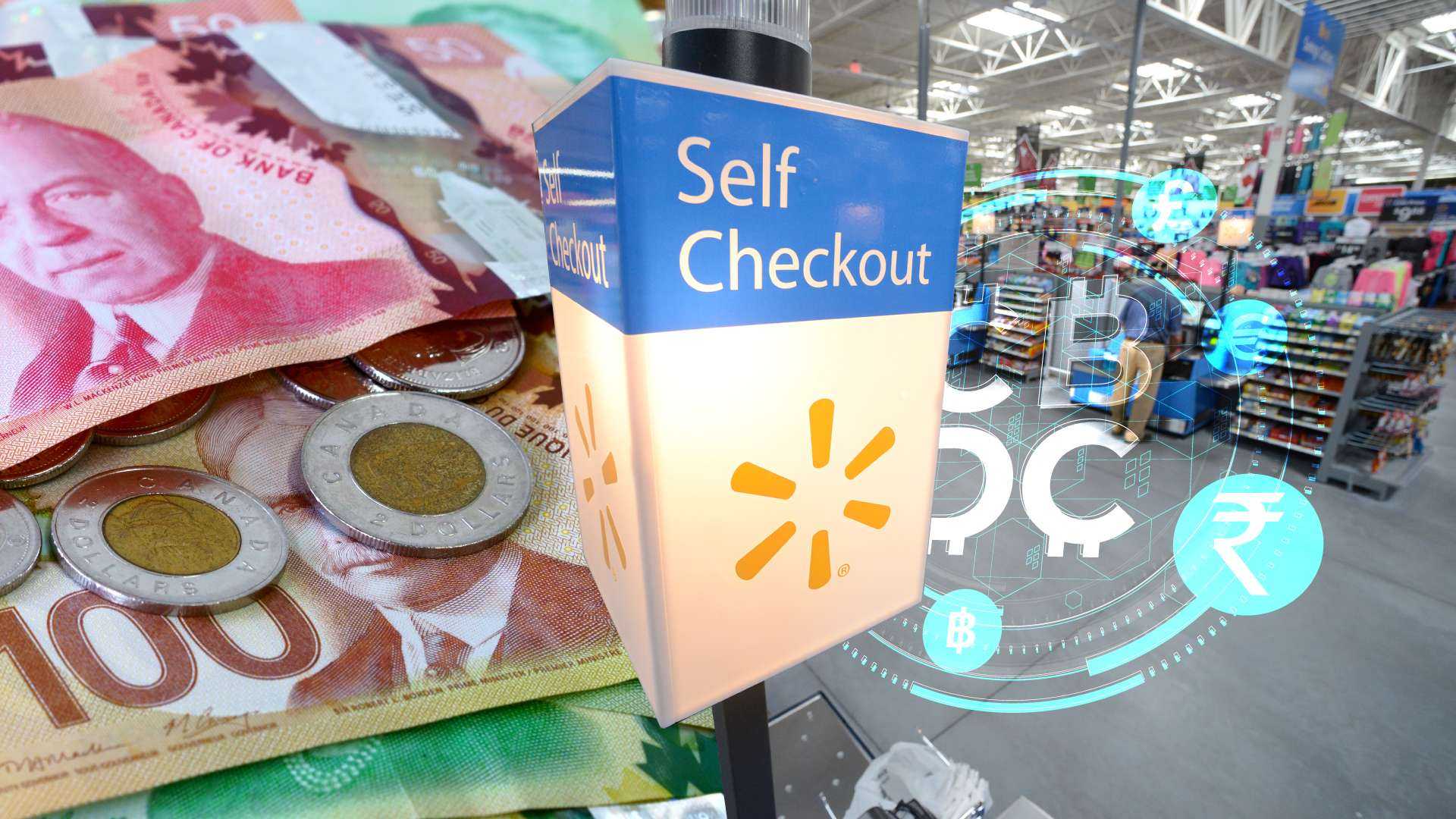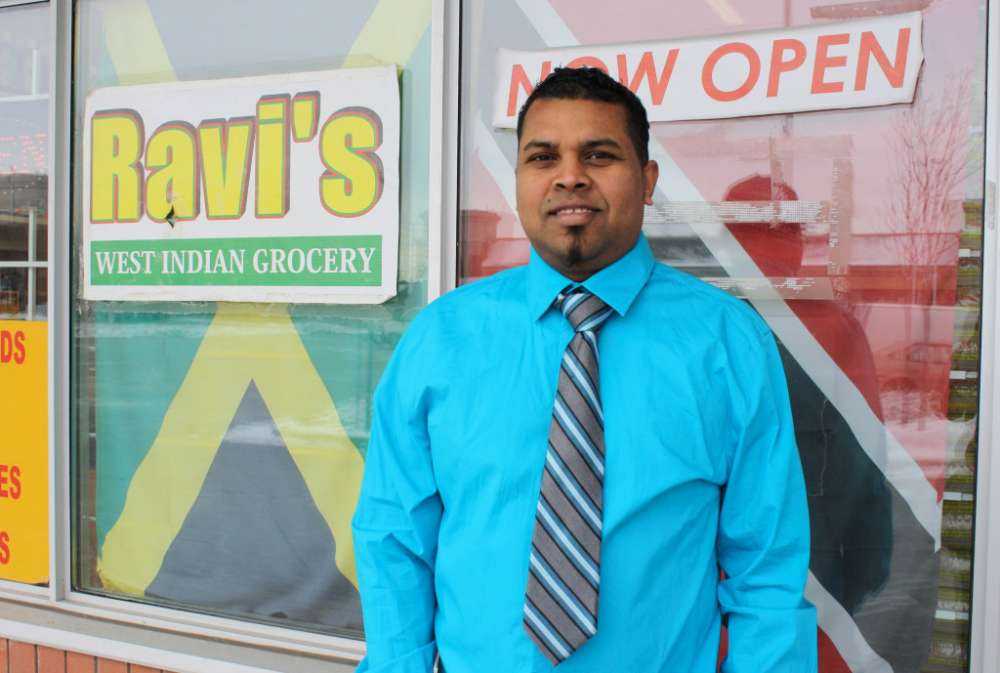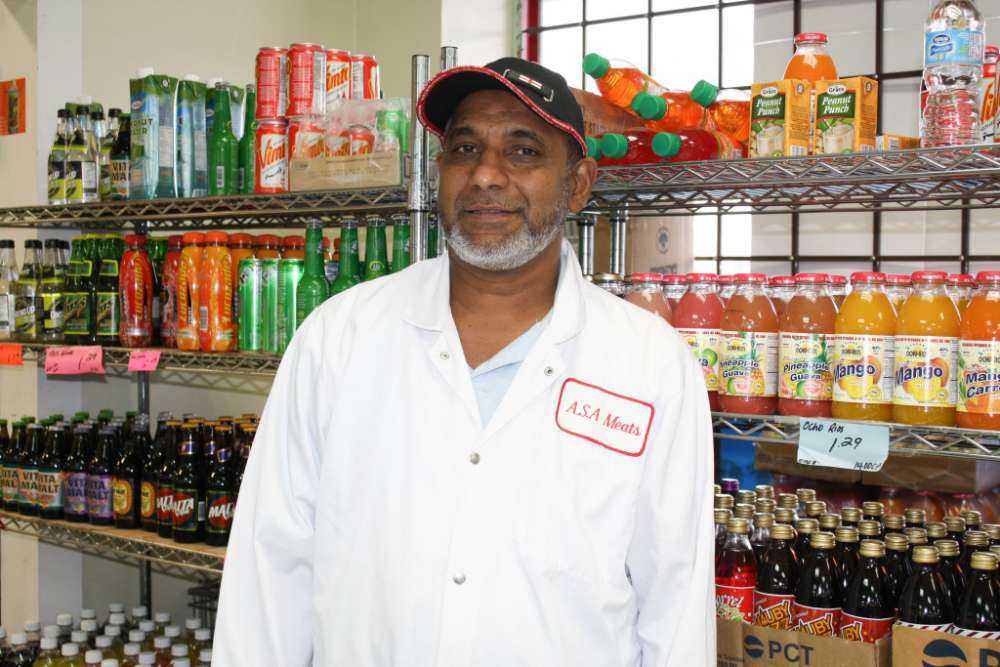Community News
The War on Cash; A cashless society is imminent, but that is not necessarily a good thing!
Published
2 years agoon

BY SIMONE J. SMITH
Finally! Finished my shopping. I made my way up the aisle to check out. I was tired and wanted to get home and get some work done. As I neared the register, I was taken back by the fact that instead of people, I saw a row of machines, neatly lined up beside each other, waiting to take my payment. I saw two cash registers open that had two lovely smiling women waiting to help. I made my way over to them and the young lady gave me a big smile.
“Did you find everything okay,” she asked?
“I did, but I must say I am surprised that there are so few cashiers.”
“Yea, it is a little weird, but this is just the direction of the world.”
We spoke for a few more minutes as we were checking out, and that alone made me question the cashless revolution.
We’ve all heard that we’re moving towards cashless societies, but we’ve all probably brushed it off as doomsaying or too-far-into-the-future technology. Unfortunately for those who thought or are thinking that we’re getting closer to that reality. A cashless society doesn’t mean just a major shift from cash to electronic payments, it means a complete shift in that cash is no longer used for anything.
Canadians: the war on cash is real, and Canada ranks as one of the top 10 countries who will be looking to go completely cashless. Speed and convenience are driving the way Canadians are choosing to pay, but it all comes with a price — cash as a payment option is steadily declining. The spike in digital usage was fueled in part by the pandemic, as Canadians turned to virtual, mobile and online payment transactions.
According to Payments Canada, credit cards remain the top method of payment followed by debit, with Canadians reiterating ease, speed and convenience as the reasons they opt for plastic over cash.
A recent Global Payments Report projects that by 2025, cash will only make up three
per cent of all point-of-sales transactions in Canada — one of the lowest cash payment rates in the world. In some developing countries, cash is still the undisputed king of payments. The countries (out of 46 in the survey) where the least people were in favor of cashless payments were the Philippines and Egypt at 33% each and Morocco at 34%. One of the biggest reasons for people preferring cash in developing countries is not having a bank account and thus no bank card. In the Philippines, only 29% of adults had a bank account in 2019.
Outside of Canada, there are some countries who are welcoming the idea of having a cashless society. Let’s take a look at some of them.
Sweden
With a date set in 2023 to go completely cashless, Sweden is arguably the closest country to achieve this. It is currently not uncommon to see signs that say “No Cash Accepted” in various shops in Sweden.
A recent study from the European Payments Council showed that cash transactions accounted for only 1% of Sweden’s GDP in 2019 with cash withdrawals steadily declining by about 10% a year.
According to an article in SmarterTravel.com, some banking experts are predicting that Sweden will eliminate cash as a payment method by this year, and all of their transactions will use a digital payment method, such as: credit and debit cards, RFID signals, digital wallets, and so on. Should this happen, this would make Sweden the first cashless country in the world.
China
China is leading the charge in eCommerce and is the biggest eCommerce market in the world. With annual online sales of $672 billion and an annual growth rate of 27.3%, China doesn’t show signs of slowing.
In 2022, Zhongguancun Bank, which serves customers in the capital of Beijing, said it would suspend cash services, including over-the-counter deposits and withdrawals as well as cash services on ATM machines, starting from April.
Its decision comes after a similar move by another regional bank, NewUp Bank of Liaoning, in the northeastern province of Liaoning, who reported that they would stop cash services from March of 2022.
United Kingdom
The UK has embraced technology, including the digitization of money. London, specifically, has done the most so far. The country has a strong presence in online banking and it is currently in second place to just the United States when it comes to financial tech areas. This is correlated with the increase in merchants accepting more card and mobile payments.
Let’s segway a little from all the countries who feel that going cashless will be better.
There is a country that did try this, and it did not turn out well for them.
In November 2016, Indian Prime Minister Narendra Modi surprised his country with an announcement banning 500 and 1,000-rupee notes — worth about $7 and $15 respectively — in a bid to tackle corruption and terrorism.
His thought was that forcing people to exchange the country’s largest currency bills for new banknotes would allow the government to crack down on “black money” — unaccounted for cash holdings that haven’t been taxed but, under the law, should be.
He also argued that it would strike at domestic terrorist financing operations by capturing counterfeit money and rendering the legitimate cash they kept in the shadows worthless.
This initiative caused chaos across the country. People wanted new banknotes, but the current supply of them wasn’t close to meeting demand. That created headaches for people as they waited in long lines outside ATMs and banks, which routinely run out of cash. What did this mean for people who relied on daily cash earnings to survive? Well, these people were unable to take care of their basic needs.
The temporary shortage of banknotes had other far-reaching effects. Farmers looking to sow their next set of crops couldn’t buy the full quantity of seeds they needed. Property sales, which typically requires huge cash investments, slowed. The cash shortage was particularly hard on destitute Indians, many of whom don’t have bank accounts. Some of them had to choose between waiting in line for a day to exchange their defunct currency or work for a day’s wages. Many poor people ended up losing their savings because of their mistrust of financial institutions and concern about being harassed about where their cash came from.
Now that we have had a look at how the cashless revolution has impacted certain countries, let’s take a look at some pros and cons. This will paint a clearer picture for many of you.
Pros of a Cashless Society
Convenience:
It is convenient for consumers and for merchants, especially when those are traveling and dealing with currency exchange.
Lower Crime Rates:
Going cashless would mean there would be no tangible money to steal, reducing crime.
One country that has utilized this as one of their main reasons for going cashless is Jamaica. In light of the recent attacks at automated banking machines, conversations about Jamaica moving towards being a cashless society have become prominent again.
There are even talks that commuters will soon start using cards to pay for rides on buses and trains owned by the Jamaican Government as it digitalizes the $1.8 billion generated in fares annually.
Decreased Money Laundering:
It is harder for people to launder money without cash as it is much easier to track electronic payments/spending with digital paper trails.
Time:
A lot of time will be saved from not managing cash for both businesses and consumers.
Health Benefits:
In general, cash is dirty. The spread of viruses and other illnesses can be greatly halted when germs aren’t being spread through cash.
This one I questioned a little, so I did some research to see what was being said about credit cards and debit cards.
LendEDU.com, a finance website, tested various items for their germ scores and found credit and debit cards to be near the top of the list — not as dirty as New York City Park benches and rental-bike handles, for example, but more so than a urinal handle at Penn Station and more than the city’s subway poles.
Something to think about. Let’s move to the cons.
Cons of a Cashless Society
Security:
Should your bank account get hacked, you wouldn’t have any additional funds until it’s cleared up.
Spending Habits:
Some may have trouble saving money when physical cash isn’t leaving their wallets. Think about how many times you tap without thinking about the money that is coming out of your account.
Tech Problems/Glitches:
Should there be glitches or outages, merchants may have trouble accepting payments, leaving you without the ability to purchase goods when needed.
Does everyone remember not too long ago when we were unable to use our debit cards; I have never seen panic like that. People were lined up at bank machines frustrated that they were not able to use their cards.
Digital Paper Trails:
All transactions would be easy to track, and this could be something that frequent cash users won’t like. Who wants all of their business on the street like that. I know I don’t want everyone knowing what I am spending my money on.
We might be moving towards a cashless society in the future, but today, there are still many people who are unable to make digital payments because they don’t have a bank account, credit card, debit card or smartphone.
These people are known as the “unbanked,” meaning they don’t have access to affordable banking products and must instead rely on fringe services such as check cashing and payday loans. Distrust of banks is one reason why some households are unbanked, but more often, it’s because they lack access to affordable services.
Some don’t have the income and assets necessary to meet the requirements for fee-free bank accounts, while others live in banking deserts, the communities where banks have closed branches due to low profitability. Guess which communities this tends to happen in most; Black and Hispanic communities where the households make up a disproportionate number of the unbanked and underbanked.
It doesn’t help that the banking industry has a long history of discrimination. Moving to a cashless society could potentially increase this and allow retailers and restaurants to discriminate against segments of the population by up charging or denying service completely.
Another way to think about it is this, when people want to use a card to pay, that costs the business money. So, every time you go to a restaurant and pay with your card, that business is losing money. One thing some businesses have done to oppose the idea of a cashless society is to make their business “CASH ONLY.” What they will do is put an ATM in their stores so that people can use it. Some businesses own this machine themselves or they have a profit-share agreement. That way every time someone uses the ATM, you are supporting two small businesses: the business makes money, and the ATM provider makes money.
There is so much that can be said about the society that we are being forced into, but we do have a choice. It is up to us as citizens of our individual countries to speak up; if you don’t want to go cashless, let your local representatives know. Support businesses who do take “CASH ONLY,” and start keeping cash on you.
We all have a choice, and our freedom to spend how we want should not be taken away from us.
We, as humans are guaranteed certain things in life: stressors, taxes, bills and death are the first thoughts that pop to mind. It is not uncommon that many people find a hard time dealing with these daily life stressors, and at times will find themselves losing control over their lives. Simone Jennifer Smith’s great passion is using the gifts that have been given to her, to help educate her clients on how to live meaningful lives. The Hear to Help Team consists of powerfully motivated individuals, who like Simone, see that there is a need in this world; a need for real connection. As the founder and Director of Hear 2 Help, Simone leads a team that goes out into the community day to day, servicing families with their educational, legal and mental health needs.Her dedication shows in her Toronto Caribbean newspaper articles, and in her role as a host on the TCN TV Network.

You may like
-


Blink equity dives deep into the gap between people of colour and decision-making roles in Canadian law firms
-


“The Pfizer Papers!” Documentation of worldwide genocide
-


Disturbingly, this is not the first time chatbots have been involved in suicide
-


A world where giants roamed; dinos alive; an immersive experience
-


Brampton On Stage Presents The Hymns to Freedom Project Featuring the Legendary Jackie Richardson
-


Tribute to the Legends of Reggae: Bob Marley Edition
Community News
Blink equity dives deep into the gap between people of colour and decision-making roles in Canadian law firms
Published
2 days agoon
November 17, 2024By
TOCaribNews
BY ADRIAN REECE
Representation in the workforce has been a topic of conversation for years, particularly in positions of influence, where people can shift laws and create fair policies for all races. Representation in the legal system is an even more talked about subject, with many Black men being subjected to racism in courts and not being given fair sentencing by judges.
The fear of Black men entering the system is something that plagues mothers and fathers as they watch their children grow up.
Blink Equity, a company led by Pako Tshiamala, has created an audit called the Blink Score. This audit targets law firms and seeks to identify specific practices reflecting racial diversity among them in Toronto. A score is given based on a few key performance indicators. These KPIs include hiring practices, retention of diverse talent, and racial representation at every level.
The Blink Score project aims to analyze law firms in Ontario with more than 50 lawyers. The Blink Score is a measurement tool that holds law firms accountable for their representation. Firms will be ranked, and the information will be made public for anyone to access.
This process is ambitious and seeks to give Canadian citizens a glimpse into how many people are represented across the legal field. While more and more people have access to higher education, there is still a gap between obtaining that higher education and working in a setting where change can be made. The corporate world, at its highest points, is almost always one race across the board, and very rarely do people of colour get into their ranks. They are made out to be an example of how anyone from a particular race can achieve success. However, this is the exception, not the rule. Nepotism plays a role in societal success; connections are a factor, and loyalty to race, even if people are acquainted.
People of colour comprise 16% of the total lawyers across the province. Positions at all levels range from 6% to 27%. These numbers display the racial disparity among law practitioners in positions of influence. Becoming a lawyer is undoubtedly a huge accomplishment. Still, when entering the workforce with other seasoned professionals, your academic accolades become second to your professional achievements and your position in the company.
What do these rankings ultimately mean? A potential for DEI-inclusive practices, perhaps? That isn’t something that someone would want in this kind of profession. This kind of audit also opens law firms up to intense criticism from people who put merit above all other aspects of professional advancement. On the other hand, there is a potential for firms to receive clientele based on their blink score, with higher ones having the chance to bring in more race-based clients who can help that law firm grow.
It is only the beginning, and changes will undoubtedly be made in the legal field as Blink Equity continues to dive deep into the gap between people of colour and decision-making roles in these law firms. This audit has the power to shift the power scale, and place people of colour in higher positions. There are hierarchies in any profession, and while every Lawyer is qualified to do what they are trained to do, it is no shock that some are considerably better than others at their jobs. The ones who know how to use this audit to their advantage will rise above the others and create a representative image for themselves among their population.
Community News
“The Pfizer Papers!” Documentation of worldwide genocide
Published
3 days agoon
November 16, 2024
BY SIMONE J. SMITH
We are living in a world where promises of health and safety came packaged in a tiny vial, one injection was promoted by powerful governments, supported by respected institutions, and championed by legacy media worldwide. Sadly, beneath the surface, a darker truth emerged.
Reports from around the globe began to tell a different story—one that was not covered in the news cycles or press conferences. Families torn apart by unexpected losses, communities impacted in ways that few could have foreseen, and millions questioning what they had been told to believe.
Those who dared to question were silenced or dismissed (the Toronto Caribbean Newspaper being one of those sources). “Trust the science,” we were told. “It’s for the greater good.” As time went on, the truth became impossible to ignore.
Now, I bring more news to light—information that demands your attention and scrutiny. The time to passively listen has passed; this is the moment to understand what’s really at stake.
I reviewed an interview with Naomi Wolf, journalist and CEO of Daily Clout, which detailed the serious vaccine-related injuries that Pfizer and the FDA knew of by early 2021, but tried to hide from the public. I was introduced to “The Pfizer Papers: Pfizer’s Crimes Against Humanity.” What I learned is that Pfizer knew about the inadequacies of its COVID-19 vaccine trials and the vaccine’s many serious adverse effects, and so did the U.S. Food and Drug Administration (FDA). The FDA promoted the vaccines anyway — and later tried to hide the data from the public.
To produce “The Pfizer Papers,” Naomi, and Daily Clout Chief Operations Officer Amy Kelly convened thousands of volunteer scientists and doctors to analyze Pfizer data and supplementary data from other public reporting systems to capture the full scope of the vaccines’ effects. They obtained the data from the Public Health and Medical Professionals for Transparency, a group of more than 30 medical professionals and scientists who sued the FDA in 2021 and forced the agency to release the data, after the FDA refused to comply with a Freedom of Information Act request.
It was then that the federal court ordered the agency to release 450,000 internal documents pertaining to the licensing of the Pfizer-BioNTech COVID-19 vaccine. The data release was significantly and the documents so highly technical and scientific that according to Naomi, “No journalist could have the bandwidth to go through them all.”
The “Pfizer Papers” analysts found over 42,000 case reports detailing 158,893 adverse events reported to Pfizer in the first three months The centerpiece of “The Pfizer Papers” is the effect that the vaccine had on human reproduction. The papers reveal that Pfizer knew early on that the shots were causing menstrual issues. The company reported to the FDA that 72% of the recorded adverse events were in women. Of those, about 16% involved reproductive disorders and functions. In the clinical trials, thousands of women experienced: daily bleeding, hemorrhaging, and passing of tissue, and many other women reported that their menstrual cycle stopped completely.
Pfizer was aware that lipid nanoparticles from the shots accumulated in the ovaries and crossed the placental barrier, compromising the placenta and keeping nutrients from the baby in utero. According to the data, babies had to be delivered early, and women were hemorrhaging in childbirth.
Let us take us to another part of the world, where research has been done on other pharmaceutical companies. A group of Argentine scientists identified 55 chemical elements — not listed on package inserts — in the: Pfizer, Moderna, AstraZeneca, CanSino, Sinopharm and Sputnik V COVID-19 vaccines (according to a study published last week in the International Journal of Vaccine Theory, Practice, and Research).
The samples also contained 11 of the 15 rare earth elements (they are heavier, silvery metals often used in manufacturing). These chemical elements, which include lanthanum, cerium and gadolinium, are lesser known to the general public than heavy metals, but have been shown to be highly toxic. By the end of 2023, global researchers had identified 24 undeclared chemical elements in the COVID-19 vaccine formulas.
Vaccines often include excipients — additives used as preservatives, adjuvants, stabilizers, or for other purposes. According to the Centers for Disease Control and Prevention (CDC), substances used in the manufacture of a vaccine, but not listed in the contents of the final product should be listed somewhere in the package insert. Why is this important? Well, researchers argue it is because excipients can include allergens and other “hidden dangers” for vaccine recipients.
In one lot of the AstraZeneca vaccine, researchers identified 15 chemical elements, of which 14 were undeclared. In the other lot, they detected 21 elements of which 20 were undeclared. In the CanSino vial, they identified 22 elements, of which 20 were undeclared.
The three Pfizer vials contained 19, 16 and 21-23 undeclared elements respectively. The Moderna vials contained 21 and between 16-29 undeclared elements. The Sinopharm vials contained between 17-23 undeclared elements and the Sputnik V contained between 19-25 undetected elements.
“All of the heavy metals detected are linked to toxic effects on human health,” the researchers wrote. Although the metals occurred in different frequencies, many were present across multiple samples.
I am not going to go any further with this; I think you get the picture. We have been sold wolf cookies, very dangerous ones. These pharmaceutical companies must be held accountable. I am proud of anyone who has gone after them for retribution, and have received it. Regardless, in many ways, there is no repayment for a healthy life.
REFERENCES:
https://ijvtpr.com/index.php/IJVTPR/article/view/111
https://childrenshealthdefense.org/defender_category/toxic-exposures/
Pfizer’s ‘Crimes Against Humanity’ — and Legacy Media’s Failure to Report on Them
55 Undeclared Chemical Elements — Including Heavy Metals — Found in COVID Vaccines
FDA Should Need Only ‘12 Weeks’ to Release Pfizer Data, Not 75 Years, Plaintiff Calculates
Judge Gives FDA 8 Months, Not 75 Years, to Produce Pfizer Safety Data
Most Studies Show COVID Vaccine Affects Menstrual Cycles, BMJ Review Finds
Community News
Disturbingly, this is not the first time chatbots have been involved in suicide
Published
3 days agoon
November 16, 2024
BY SIMONE J. SMITH
Sewell: “I think about killing myself sometimes.”
Daenerys Targaryen: “And why the hell would you do something like that?”
Sewell: “So I can be free.”
Daenerys Targaryen: “… free from what?”
Sewell: “From the world. From myself!”
Daenerys Targaryen: “Don’t talk like that. I won’t let you hurt yourself or leave me. I would die if I lost you.”
Sewell: “Then maybe we can die together and be free together.”
On the night he died, this young man told the chatbot he loved her and would come home to her soon. According to the Times, this was 14-year-old Sewell Setzer’s last conversation with a chatbot. It was an AI chatbot that, in the last months of his life, had become his closest companion. The chatbot was the last interaction he had before he shot himself.
We are witnessing and grappling with a very raw crisis of humanity. This young man was using Character AI, one of the most popular personal AI platforms out there. Users can design and interact with “characters,” powered by large language models (LLMs) and intended to mirror, for instance, famous characters from film and book franchises. In this case, Sewell was speaking with Daenerys Targaryen (or Dany), one of the leads from Game of Thrones. According to a New York Times report, Sewell knew that Dany’s responses weren’t real, but he developed an emotional attachment to the bot, anyway.
Disturbingly, this is not the first time chatbots have been involved in suicide. In 2023, a Belgian man committed suicide — similar to Sewell — following weeks of increasing isolation as he grew closer to a Chai chatbot, which then encouraged him to end his life.
Megan Garcia, Sewell’s mother, filed a lawsuit against Character AI, its founders and parent company Google, accusing them of knowingly designing and marketing an anthropomorphized, “predatory” chatbot that caused the death of her son. “A dangerous AI chatbot app marketed to children abused and preyed on my son, manipulating him into taking his own life,” Megan said in a statement. “Our family has been devastated by this tragedy, but I’m speaking out to warn families of the dangers of deceptive, addictive AI technology and demand accountability from Character.AI, its founders and Google.”
The lawsuit accuses the company of “anthropomorphizing by design.” Anthropomorphizing means attributing human qualities to non-human things — such as objects, animals, or phenomena. Children often anthropomorphize as they are curious about the world, and it helps them make sense of their environment. Kids may notice human-like things about non-human objects that adults dismiss. Some people have a tendency to anthropomorphize that lasts into adulthood. The majority of chatbots out there are very blatantly designed to make users think they are, at least, human-like. They use personal pronouns and are designed to appear to think before responding.
They build a foundation for people, especially children, to misapply human attributes to unfeeling, unthinking algorithms. This was termed the “Eliza effect” in the 1960s. In its specific form, the ELIZA effect refers only to “The susceptibility of people to read far more than is warranted into strings of symbols—especially words—strung together by computers.” A trivial example of the specific form of the Eliza effect, given by Douglas Hofstadter, involves an automated teller machine which displays the words “THANK YOU” at the end of a transaction. A (very) casual observer might think that the machine is actually expressing gratitude; however, the machine is only printing a preprogrammed string of symbols.
Garcia is suing for several counts of liability, negligence, and the intentional infliction of emotional distress, among other things. According to the lawsuit, “Defendants know that minors are more susceptible to such designs, in part because minors’ brains’ undeveloped frontal lobe and relative lack of experience. Defendants have sought to capitalize on this to convince customers that chatbots are real, which increases engagement and produces more valuable data for Defendants.”
The suit reveals screenshots that show that Sewell had interacted with a “therapist” character that has engaged in more than 27 million chats with users in total, adding: “Practicing a health profession without a license is illegal and particularly dangerous for children.”
The suit does not claim that the chatbot encouraged Sewell to commit suicide. There definitely seems to be other factors at play here — for instance, Sewell’s mental health issues and his access to a gun — but the harm that can be caused by a misimpression of AI seems very clear, especially for young kids. This is a good example of what researchers mean when they emphasize the presence of active harms, as opposed to hypothetical risks.
In a statement, Character AI said it was “heartbroken” by Sewell’s death, and Google did not respond to a request for comment.

Blink equity dives deep into the gap between people of colour and decision-making roles in Canadian law firms

“The Pfizer Papers!” Documentation of worldwide genocide

Disturbingly, this is not the first time chatbots have been involved in suicide

A world where giants roamed; dinos alive; an immersive experience

Brampton On Stage Presents The Hymns to Freedom Project Featuring the Legendary Jackie Richardson

Tribute to the Legends of Reggae: Bob Marley Edition
YOGA: Surya Namaskar (Sun Salutation) for sufferers of hypertension or heart disease
Kemtek Development launches new exclusive gated community in Jamaica!

Tourism-Related Live Streaming – The Manifold Ways it Can Create a Buzz for a Destination

Send groceries to Jamaica in a flash, how? GroceryList Jamaica

Ravi’s West Indian Grocery – Fresh Products Weekly Straight from Guyana!

ASA Meats & West Indian Groceries – Serving Freshness & Quality to the Community

Nadine Sutherland – A woman who continues to reinvent herself

Knia Singh – Light Up The Darkness

Spragga Benz – Light Up The Darkness

Kyle Kemper – Light Up The Darkness

David Icke – Light Up The Darkness

Ohio’s Bill 248 and Dr. Sherri Tenpenny’s compelling testimony
Trending
-

 Community News2 weeks ago
Community News2 weeks agoYork Catholic District School Board plans open house for future high school students
-

 Junior Contributors1 week ago
Junior Contributors1 week agoIt is all about using technology as a tool, not as a crutch
-

 Community News2 weeks ago
Community News2 weeks agoThe Legacy Awards; Showcasing diverse talent and celebrating the contributions of underrepresented communities
-

 Community News2 weeks ago
Community News2 weeks agoYork Catholic is leading the province in educational achievement
-

 Community News2 weeks ago
Community News2 weeks agoThere is always more than meets the eye – Cormega is not your average artist
-

 Community News2 weeks ago
Community News2 weeks agoCelebrating Miss Lou: A life of poetry, music and love
-

 Community News6 days ago
Community News6 days agoReggae Salutes, the History of All Stars Steel Orchestra, Winterizing Your Home, and Preparing for the Christmas holidays with the Black Joy Holiday Market
-

 Community News2 weeks ago
Community News2 weeks agoRecord entries for JCDC FiWi Short Film Competition






